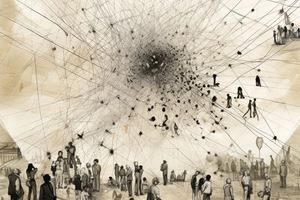
Predictive analysis
Innovative solutions are needed to ensure a more dignified and efficient humanitarian response. With the expansion of big data, the potential of informing scenario-building and forecasting in humanitarian planning and operations with higher volumes of data has significantly increased.

With more accurate predictions and better evidence for scenario-building, humanitarian action can be accelerated, quality improved and outcomes for people affected by (potential) displacement enhanced.
Our objective is to develop tools that can enhance our understanding of the focus areas of our work, and provide us and the wider humanitarian sector with accurate forecasts and scenarios for strategic planning, operational response and programming in support of better prevention, early action and protection to displacement-affected populations.
Access the conflict-related models


Anticipatory Humanitarian Action for Displacement (AHEAD) model
Read moreAccess the climate-related models

Slow-Onset Drought-Related Displacement Model
Read more
SPIN: Pastoralist insecurity forecast model
Read moreRelevant resources
Links to articles, reports, etc. on our predictive analysis tools and forecasts:
- OCHA: Reviewing The Danish Refugee Council’s Foresight Model
- Der Spiegel: Predicting Refugee Movements? There's an App for That
- The Guardian: Covid to displace more than a million across the Sahel, new tool predicts
- Migration Strategy Group: Automating decision-making in migration policy:
a navigation guide - IBM & DRC: Scenario-based XAI for humanitarian aid forecasting
- Migration Policy Practice: Foresight: Using machine learning to forecast and understand forced displacement
- NetHope: Digital for Climate Adaptation and Resilience of Vulnerable Communities

Videos: Presentations of our work
Read moreFunded by

European Civil Protection and Humanitarian Aid Operations

The Swedish International Development Cooperation Agency
